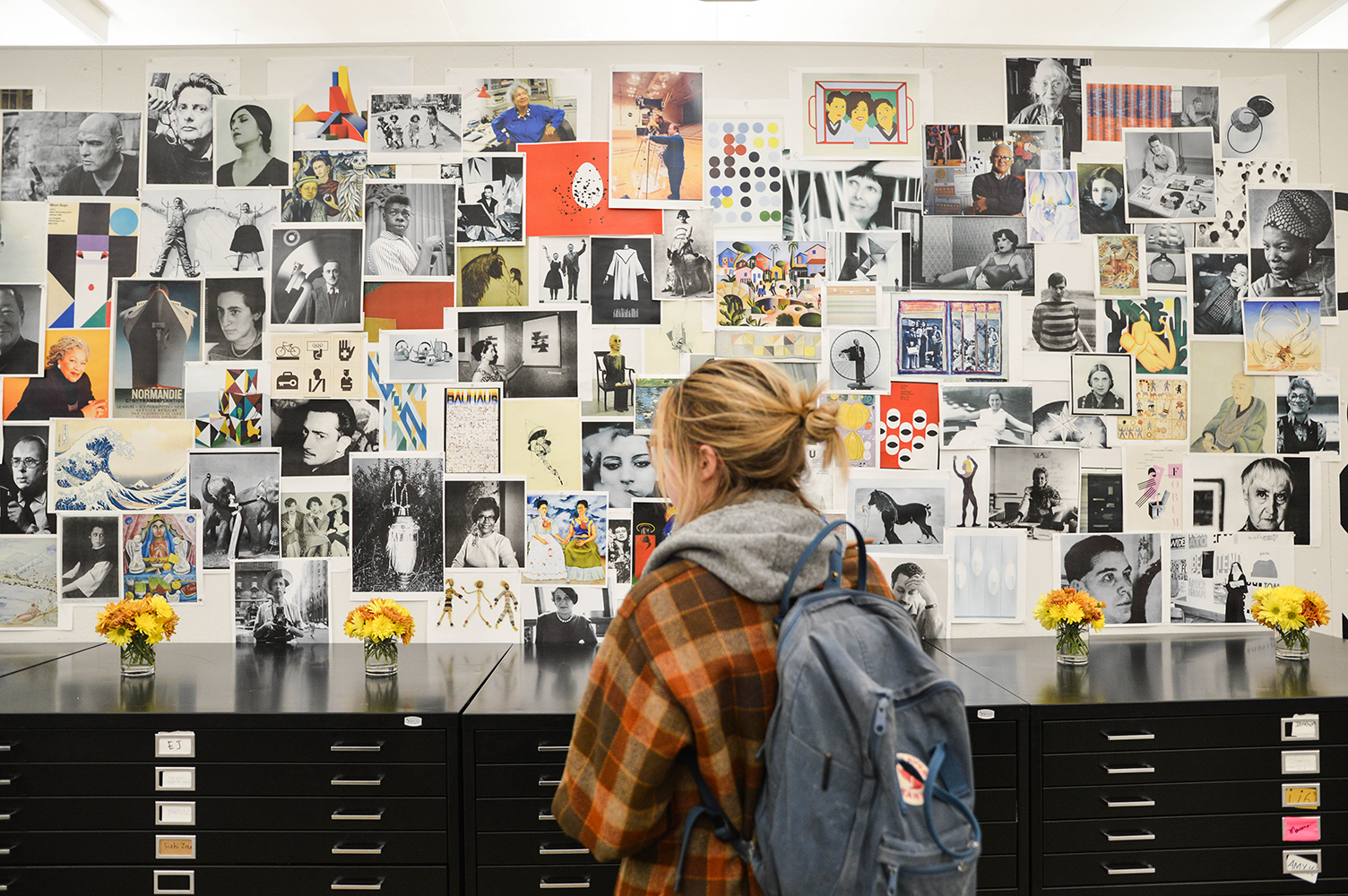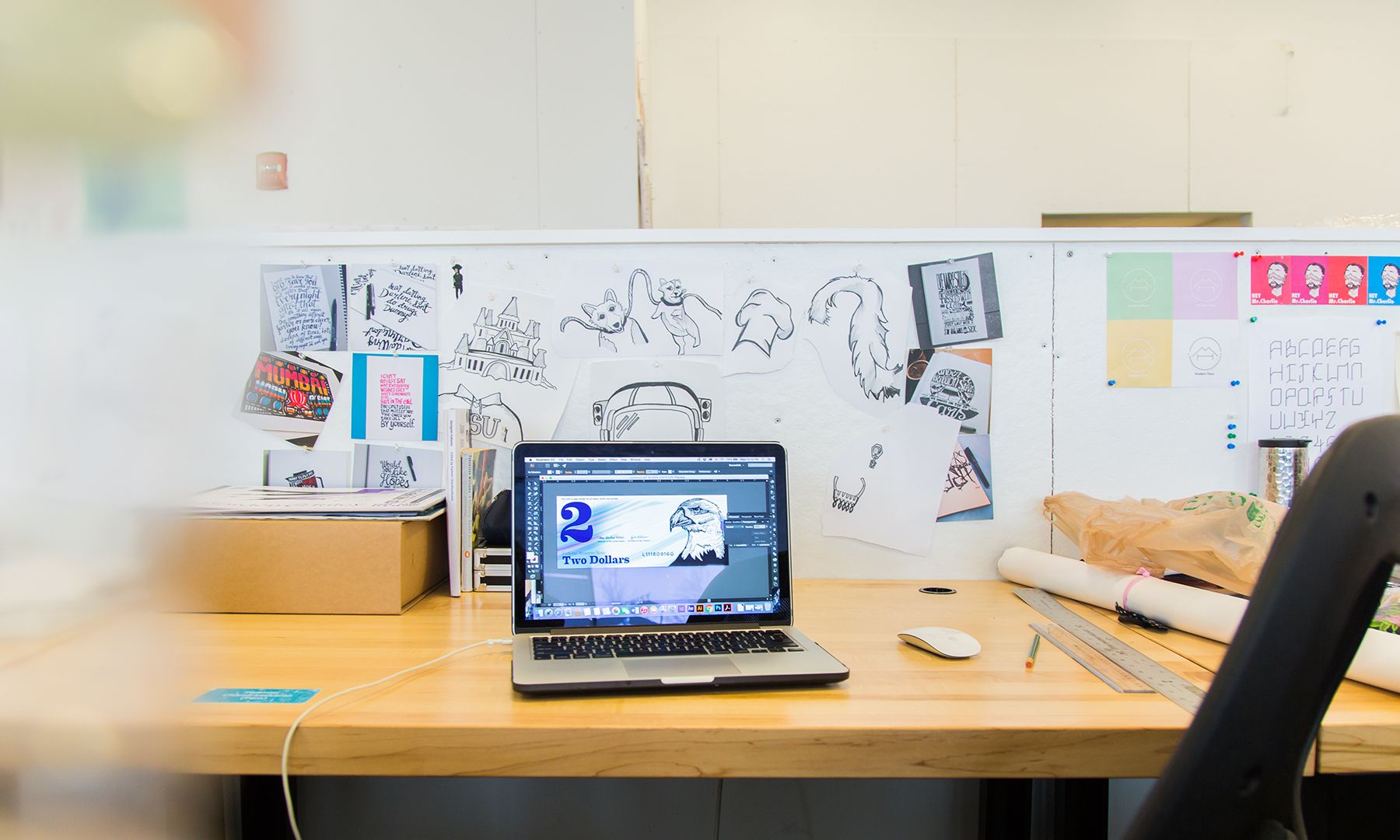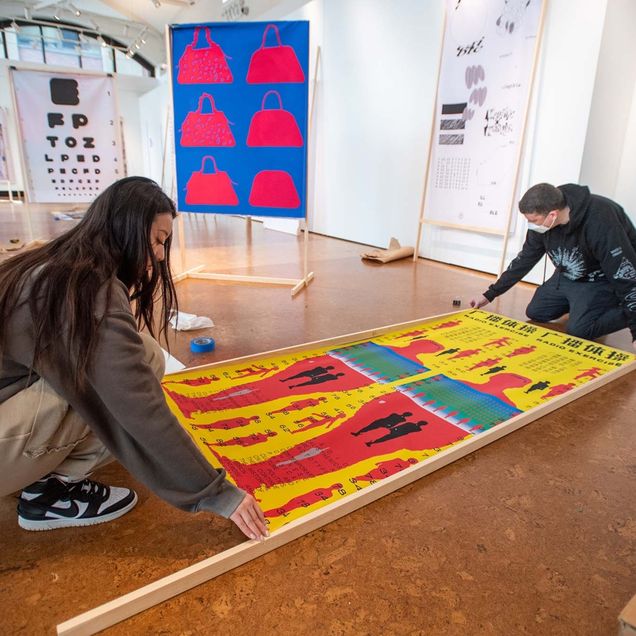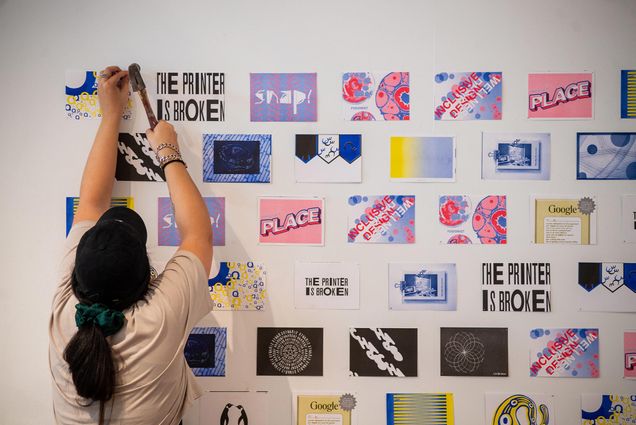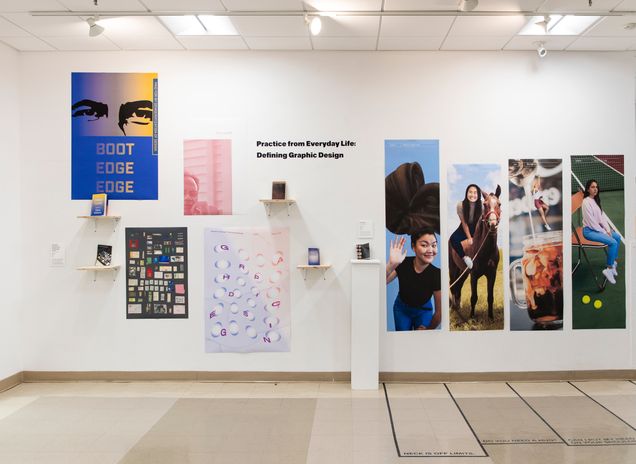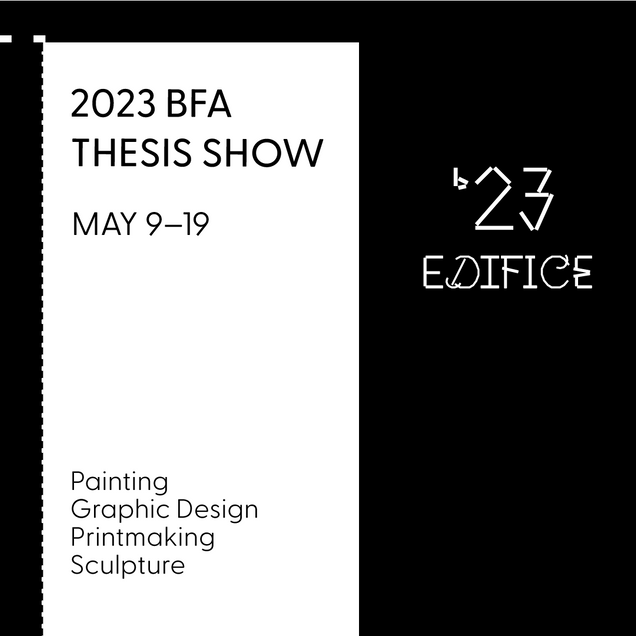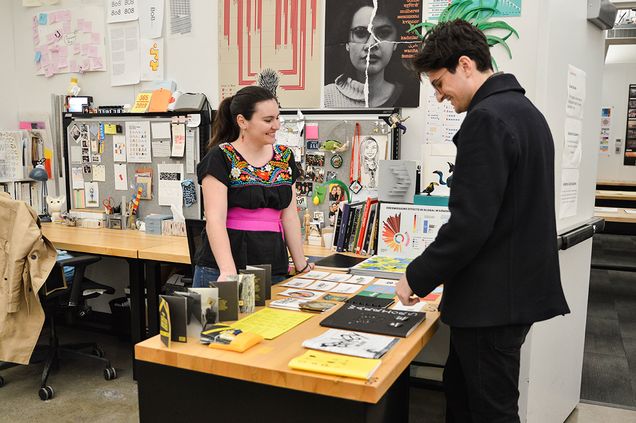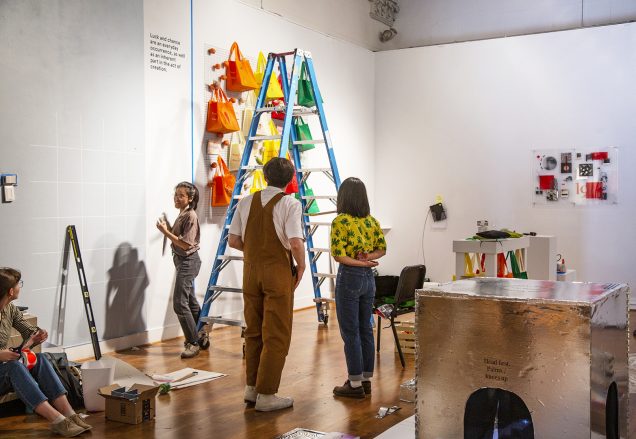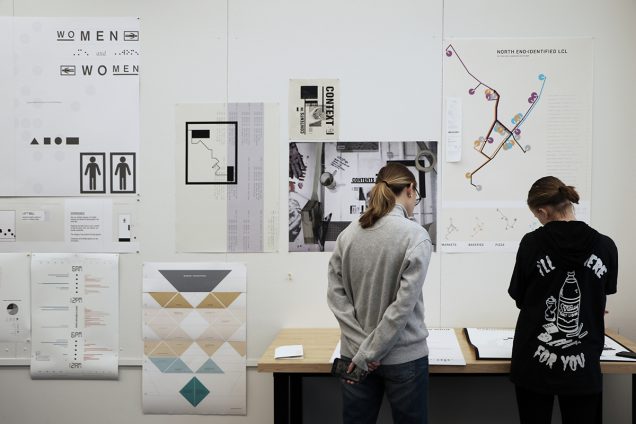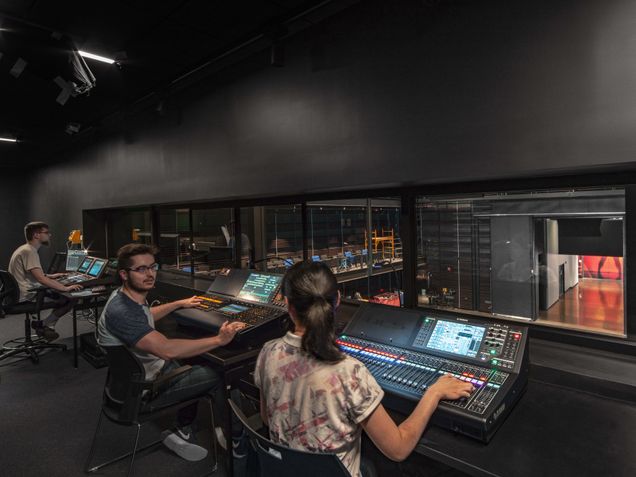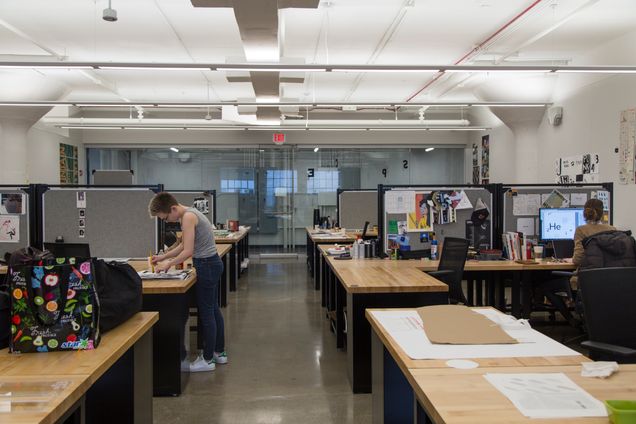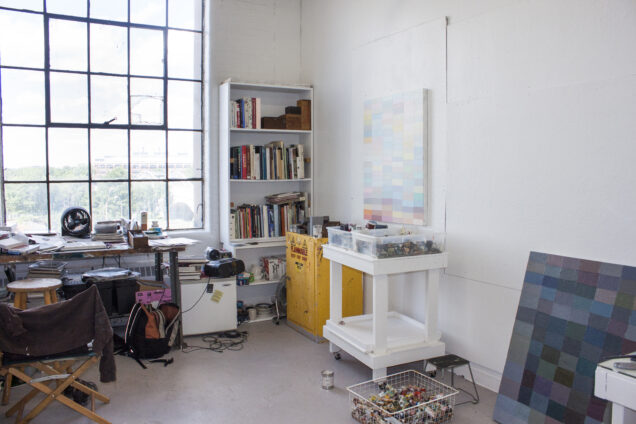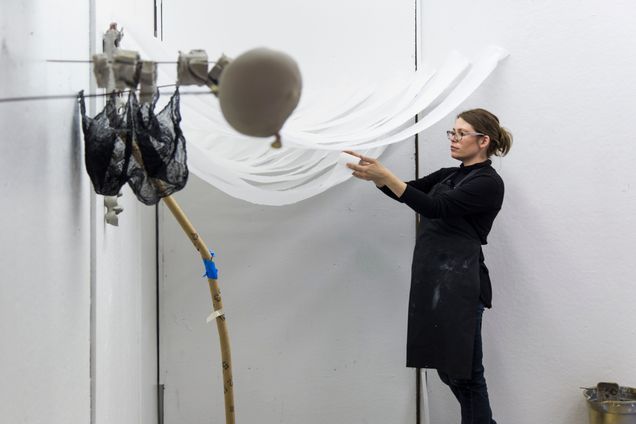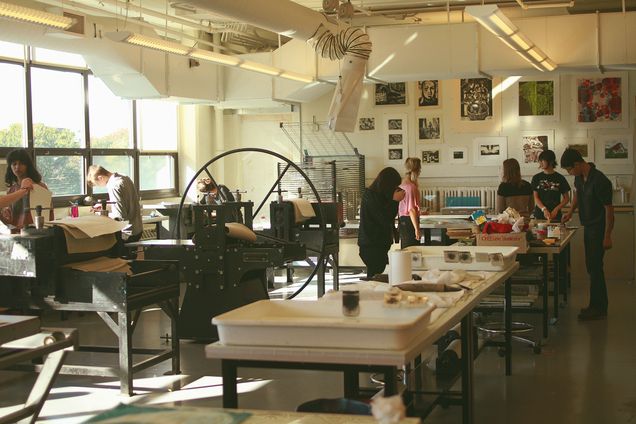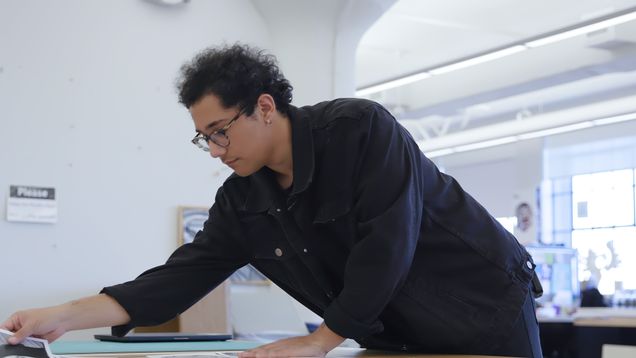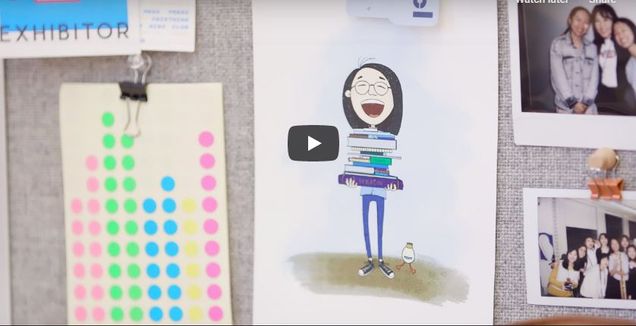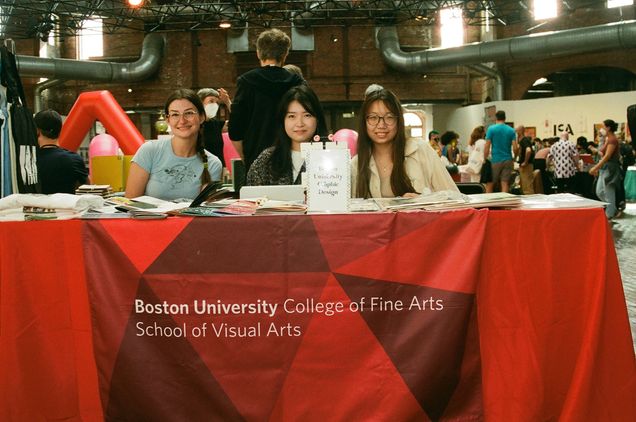Degrees Offered
One of the Best Academic Design Spaces in the Nation
The recent introduction of new facilities in the Graphic Design program includes new graduate student studios, two spacious open communal studios, two classrooms with LCD projectors and critique walls, the latest printing facilities, and a new seminar room. Take a closer look at these and all of CFA’s Graphic Design facilities.
Featured Faculty
-
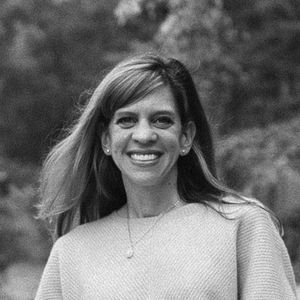
Kristen Coogan
Associate Professor of Art, Graphic Design; Chair, Graduate Graphic Design
-

Christopher Field
Lecturer in Art, Graphic Design
-
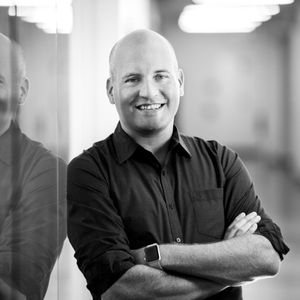
James Grady
Assistant Professor of Art, Graphic Design; BU Spark! Creative Director; Principal, Design Axl
-

Nicholas Rock
Assistant Professor of Art, Graphic Design; Director of Graduate Studies
-
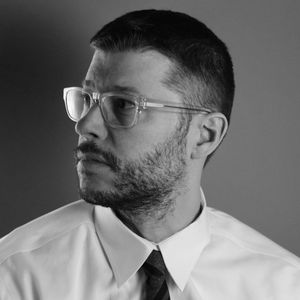
Christopher Sleboda
Associate Professor of Art, Graphic Design; Chair, BFA Graphic Design
-
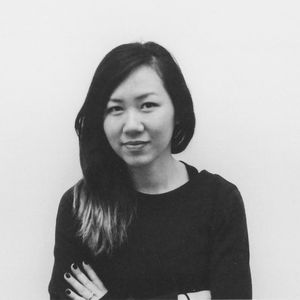
Mary Yang
Assistant Professor of Art, Graphic Design
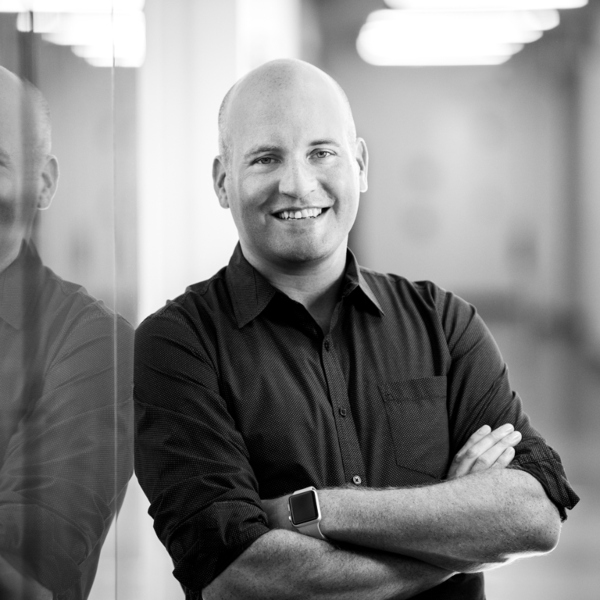
What are some of the strengths of BU’s graphic design programs?
Designer and educator with over two decades of experience, James Grady, assistant professor of graphic design at BU School of Visual Arts and creative director at BU Spark!, came to BU with an interdisciplinary career leading design projects for clients such as Google, Nike, and Samsung.
In CFA’s Faculty Feature series, Grady shares with CFA his excitement in teaching the next generation of graphic designers and elaborates on the strengths of BU’s graphic design programs – from collaboration opportunities expanding beyond CFA to our state-of-the-art graphic design studios.
We offer prolific form-making, with lots of divergent ideas, prototyping, sketching, and concepts. We don’t have a ‘one-solution’ point of view. Once students find their curiosity, they can match it with a visual form. They can bring them closer, converging them. The question always is: how do they want to frame their point of view through the lens of graphic design and all the many different mediums it can employ? So, the idea is to go really wide and then converge on a thesis that can be topic-driven or process orientated. We help them to define their own process and can direct them to various topics.
James Grady, Assistant Professor

